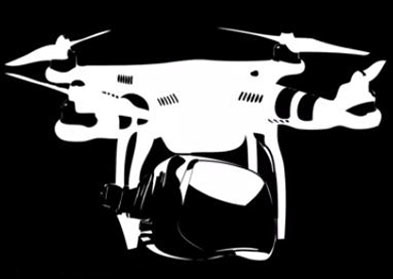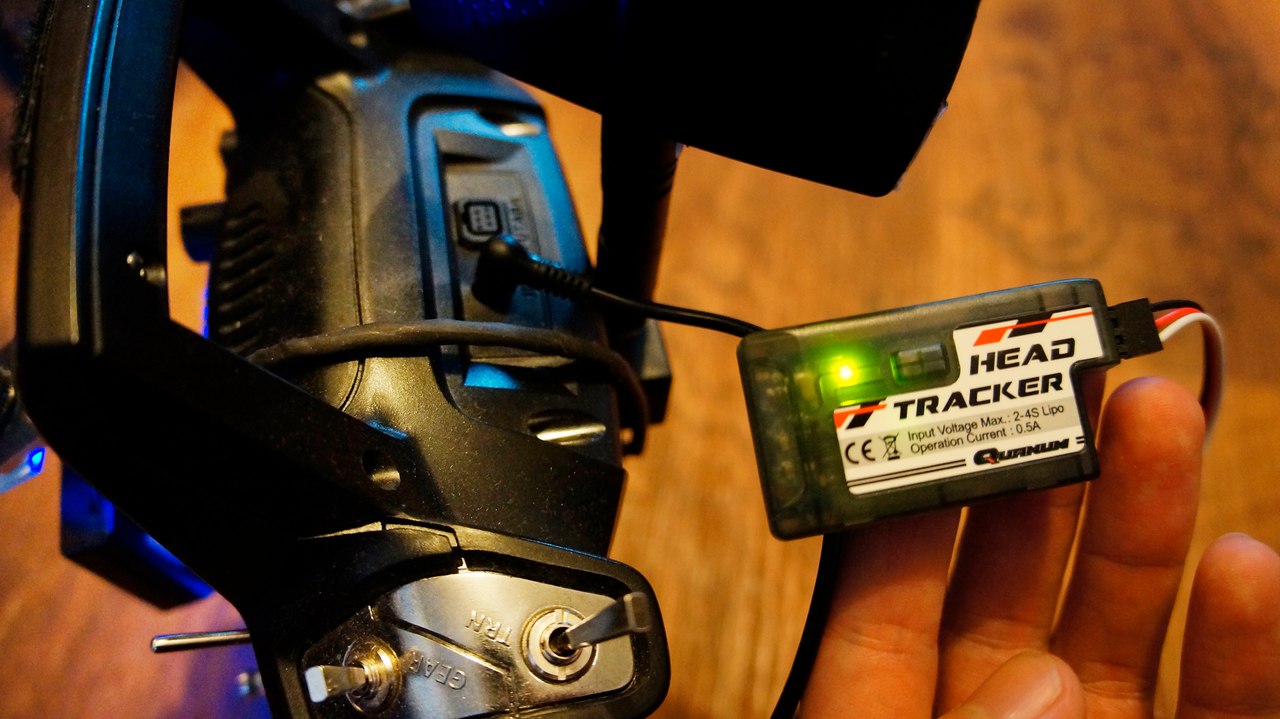3D FPV or how to add realism to flights. Part 2
 Greetings to all again. In a previous article, I talked about how to add realism to FPV flights through video glasses with the function of 3d pictures. Today I will continue this topic, talking about the synchronization of movements of the camera and head. So, so that during the flight we do not look at one point, but can look around a bit, we need a device such as HeadTracker. Now the head tracker is often installed in FPV glasses (for example, fatshark or those that we considered in the last article - SkyzoneSKY-02). However, I think everyone noticed that such glasses cost a lot. So is it possible to make “camera head control” cheaper? Or, let's say you already have a video helmet with a better picture than glasses, and you just want to add HeadTracker to them? The answer is yes!
Greetings to all again. In a previous article, I talked about how to add realism to FPV flights through video glasses with the function of 3d pictures. Today I will continue this topic, talking about the synchronization of movements of the camera and head. So, so that during the flight we do not look at one point, but can look around a bit, we need a device such as HeadTracker. Now the head tracker is often installed in FPV glasses (for example, fatshark or those that we considered in the last article - SkyzoneSKY-02). However, I think everyone noticed that such glasses cost a lot. So is it possible to make “camera head control” cheaper? Or, let's say you already have a video helmet with a better picture than glasses, and you just want to add HeadTracker to them? The answer is yes!To control the camera, I will use QuanumHeadTracker.

However, this is not the only model that the market offers. As stated by the manufacturer - this model does not "drift" and clearly holds the position. In this article, I will not compare the trackers themselves, but simply talk about what I’ve chosen and write “what’s eat it with”. Looking ahead, I’ll say that this “technology” is better suited to copters of at least 400 class so that it can be installed under the camera. That is, it's still not for racing quadrics.
So, the principle of the tracker.
For its operation, we need only the copter itself with a gimbal and a camera, and a control panel with a port for the “coach” (for example, turnigy 9xr, in which there are 2 ports, analogs of JR and Futaba).

The headtracker itself is connected to one of the ports via the bundled wire and, as it were, “wedged” into the control. Through a gyroscope, he "understands" which direction the head is tilted, unless of course you have fastened it to some other place. And through the transmitter it gives a signal to the receiver, which, in turn, directs the suspension.
However, from my own experience, I’ll tell you about one nuance ... I originally wanted to make camera control through 3 servos. That is, that the camera rotates along the axes pitch, roll and yaw. But then I realized that the whole structure would be rigidly fixed to the copter, and when it is tilted at the time of flight, it will tilt with it, regardless of “your head”. Yes, control of the camera through the tracker will be, but plus all the fluctuations of the copter will be added, which will kill all the sensations. To prevent this from happening, it is better to install a suspension with individual brains. For example, such a suspension for cameras like Gopro. By happy coincidence, I just turned out to be a copter capable of pulling such a gimbal with a camera. Due to the relatively large weight (suspension + Gopro), we need a quadric more “high-torque” than racing.
So, we have a gimbal that is able to stabilize the camera along 3 axes regardless of the “tilt of the copter,” and in addition we can control the gimbal with our own head, “without distracting” our hands from controlling the quadric. In principle, in this way you can shoot a good video, because often one operator-pilot is not able to immediately direct both the flight and the camera (if there is any dynamic scene). A little settings and get this:
The smoothness and rotation angles of the gimbal relative to the tracker are configured in the software that goes to the gimbal itself (to its brains) in the RC settings section. However, there is one drawback, it seems to me. The viewing angle using the tracker is only 180 degrees in all axes. In other words, we can look left, right, up and down, but to look back, we need to deploy the copter. Of course, you can configure it so that when you turn your head 180 degrees, the camera will rotate 360, but this will already be visually unnatural. However, flying, I realized that this is not the main thing. The main factor was sensation. Especially when you bend on a quadric and tilt your head to the side, you can really tumble to the ground. Therefore, it is better to take in advance what you can sit on. :)
As a result, we got a kind of oculus rift for full immersion in an FPV flight worth up to 25 thousand rubles :
- OCDAY 3D FPV 5.8G 32CH helmet - $ 225.94 (~ $ 17,210.54) *
- Tracker Quanum 3 Axis No Drift - 1 360 rubles.
- 3-axis suspension - $ 77.54 (~ 5 906.46 rubles) *
That's all, with you there was a simple service for choosing complex Dronk.Ru equipment .
Do not forget to subscribe to our blog , there will be many more interesting things.
ps * - links marked with a referral asterisk, so you can save extra by returning a cashback of up to 4%. More details at Dronk.ru/cashback/ or you can get 6.5% by purchasing them through the LetyShops cashback service .
Our other publications:
- 3D FPV or how to add realism to flights
- Chuwi Ilife V5 - a $ 99 robot vacuum cleaner or how to turn daily cleaning into fun
- Great quadrocopter under $ 60 or a review of the JJRC H8C
- What to give a boom for the New Year in the range of 10-20 $? Part 2
- Our small joys or how to please a geek for the new year within $ 10-20?
- The world's first pocket hexacopter for $ 18 - MJX X901

